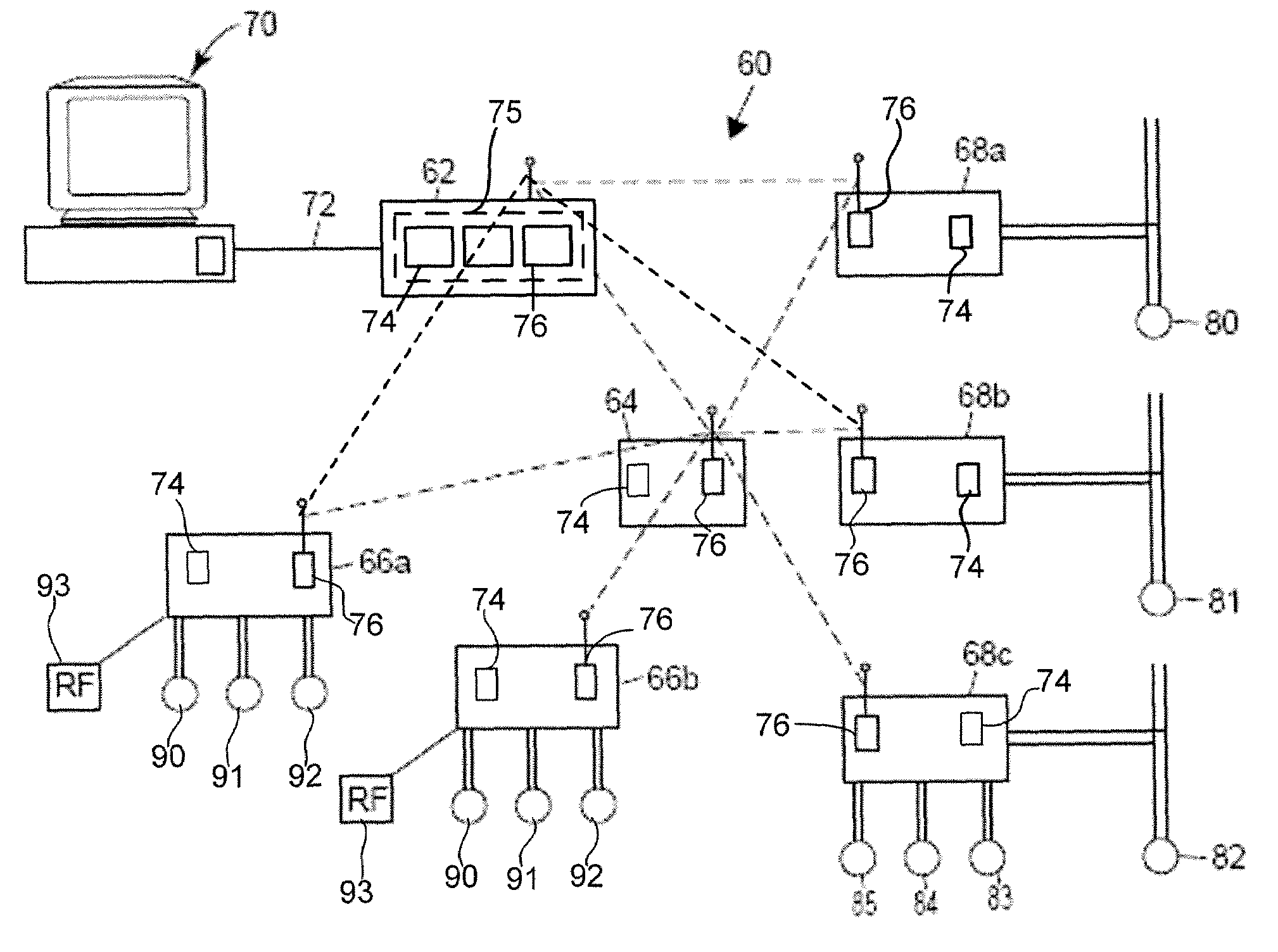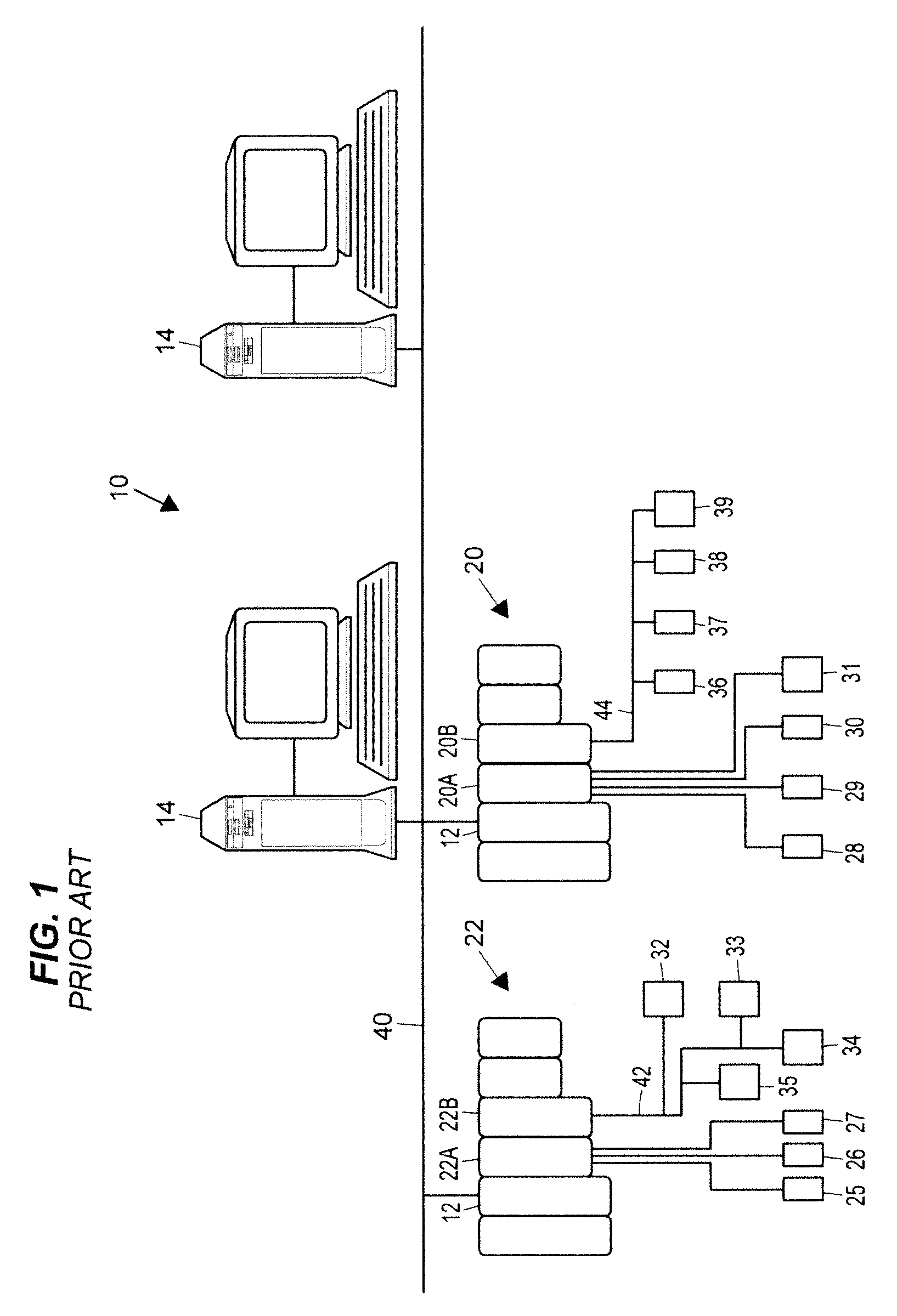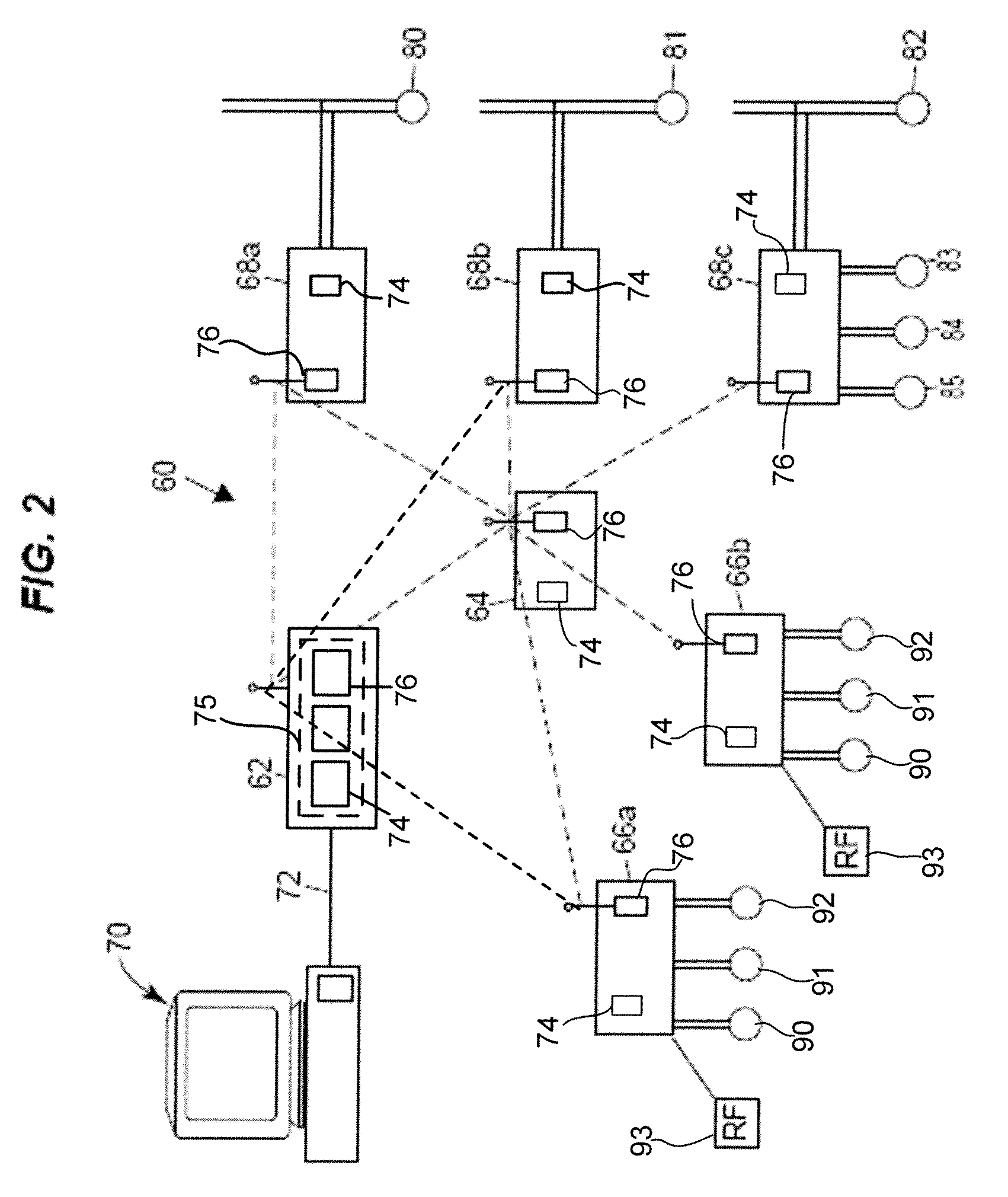An H2
Fieldbus network transmits data at a rate up to 2.5 megabits per second, does not provide power to field devices connected to the network, and is provided with redundant transmission media.
Even when all components of a
distributed control system adhere to the same standard (such as the
Fieldbus standard), one manufacturer's
control equipment may not be able to access the secondary functions or secondary information provided by another manufacturer's field devices.
For example, many industrial control applications subject field devices and their associated I / O communication networks to harsh physical environments (e.g., high, low or highly variable ambient temperatures, vibrations, corrosive gases or liquids, etc.), difficult electrical environments (e.g., high
noise environments, poor
power quality, transient voltages, etc.), etc.
In any case, environmental factors can compromise the integrity of communications between one or more field devices, controllers, etc.
In some cases, such compromised communications could prevent the process
control system from carrying out its control routines in an effective or proper manner, which could result in reduced process
control system efficiency and / or profitability, excessive wear or damage to equipment, dangerous conditions that could damage or destroy equipment, building structures, the environment and / or people, etc.
While hardwired I / O communication networks can initially provide a robust I / O communication network, their robustness can be seriously degraded over time as a result of environmental stresses (e.g., corrosive gases or liquids, vibration,
humidity, etc.).
For example, contact resistances associated with the I / O communication network wiring may increase substantially due to
corrosion, oxidation and the like.
In addition, wiring insulation and / or shielding may degrade or fail, thereby creating a condition under which environmental electrical interference or
noise can more easily corrupt the signals transmitted via the I / O communication network wires.
In some cases, failed insulation may result in a
short circuit condition that results in a complete failure of the associated I / O communication wires.
Additionally, hardwired I / O communication networks are typically expensive to install, particularly in cases where the I / O communication network is associated with a large industrial
plant or facility that is distributed over a relatively large
geographic area, for example, an
oil refinery or
chemical plant that consumes several acres of land.
In many instances, the wiring associated with the I / O communication network must span long distances and / or go through, under or around many structures (e.g., walls, buildings, equipment, etc.) Such long wiring runs typically involve substantial amounts of labor, material and expense.
Further, such long wiring runs are especially susceptible to
signal degradation due to wiring impedances and coupled electrical interference, both of which can result in unreliable communications.
Moreover, such hardwired I / O communication networks are generally difficult to reconfigure when modifications or updates are needed.
Retrofitting a
process plant in this manner may be very difficult and expensive due to the long wiring runs and space constraints that are often found in older process control plants and / or systems.
High wire counts within conduits, equipment and / or structures interposing along available wiring paths, etc., may significantly increase the difficulty associated with
retrofitting or adding field devices to an existing system.
Exchanging an existing
field device with a
new device having different field wiring requirements may present the same difficulties in the case where more and / or different wires have to be installed to accommodate the
new device.
Such modifications may often result in significant
plant downtime.
However, most, if not all, wireless I / O communication networks actually implemented within process plants today are implemented using relatively expensive hardware devices (e.g., wireless enabled routers, hubs, switches, etc.), most of which consume a relatively large amount of power.
Further, intermittent interferences, such as the passing of trucks, trains, environmental or whether related conditions, etc., make wireless communication networks unreliable and therefore problematic.
While the point-to-point paths are generally selected to insure adequate wireless communications, changes within the plant, such as the removal or addition of equipment, walls, or other structures may make the initially selected paths less reliable, leading to unreliable wireless communications.
While wireless I / O communication networks can, for example, alleviate the long term robustness issues associated with hardwired communication paths, these wireless I / O communication networks are relatively inflexible and are considered by most in the process control industry to be too unreliable to perform important or necessary process control functions.
For example, there is currently no easy manner of telling when a wireless communication is no longer functioning properly, or has degraded to the point that communications over the wireless link are likely to be unreliable or to cease altogether.
As a result, current process control operators have very little faith in wireless communication networks when implemented for important and necessary process control functions.
Thus, due to the costs associated with installing a wireless I / O communication network (e.g., site surveys, expert configuration, etc.), and the relative little amount of faith that current process
control system operators have in wireless communications, wireless I / O communication networks are often cost prohibitive for what they provide, particularly for relatively large process control systems such as those typically used in industrial applications.
 Login to View More
Login to View More  Login to View More
Login to View More 


